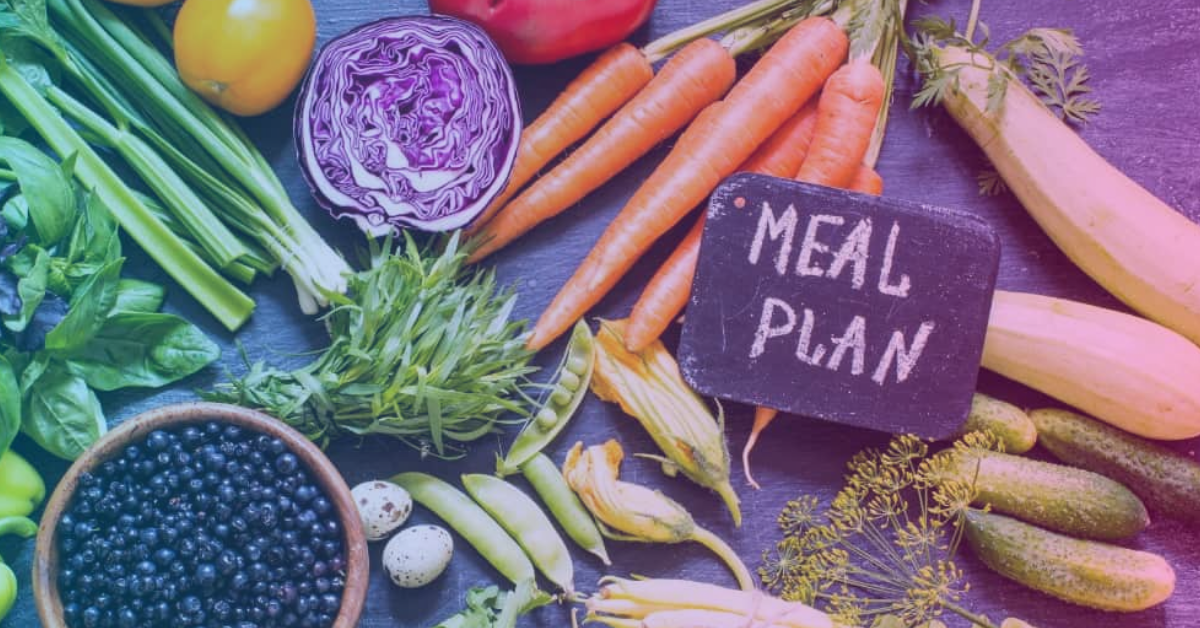As a restaurant owner, manager, or chef, undoubtedly, you try to find balance in everything to please your customers and promote business growth. Restaurant menu management isn’t an exception. That’s why you’re here, looking for some guidelines from professionals on how to create a balanced menu for a restaurant.
But first, let’s prove that you need one at all.
Why bother changing anything in your menu? Delve into some valuable benefits that balanced menus can bring to restaurants.
Why Restaurants Should Shift Towards Balanced Menus Today
Balancing food consumption has become one of the healthy nutrition trends. No wonder, as 54 percent of people (and 63 percent of those aged 50 and above) are more worried about the healthfulness of their to-be-consumed food now than they were ten years ago.For those keen on understanding the intricacies of balanced diets and nutrition, there are specialized nutrition courses available that delve deep into the science and art of food. It’s worth knowing that “healthy nutrition” automatically equals “balanced nutrition” for consumers of today.
Making a balanced menu for your restaurant, you simultaneously do the following:
- Encourage mindful eating
- Develop your restaurant team’s creativity
- Lower food expenses
- Spice up your assortment with freshness
- Present new healthy-eating models to the market
- Lure more diners and increase profits
Did you know that 93 percent of consumers feel a strong urge to eat healthier at least once in a while, and 70 percent of restaurant visitors prefer establishments that serve healthy, balanced dishes?
Lack of proper audience targeting tactics is one of the restaurant marketing mistakes you surely wouldn’t want to make. Transforming your menu and expanding it with healthier options for those folks who are seriously concerned about their eating habits will help you attract more customers.
How do you create a balanced menu for your restaurant? Let some expert tips guide you throughout the process.
How to Make a Properly Balanced Menu for a Restaurant – 6 Killer Tips from Experts
Follow the below pieces of advice from experts on how to create a well-balanced menu for your establishment.
- Prioritize balanced meals
How do you know the meal is balanced?
According to nutritionists and dietitians, a balanced meal should obligatory include ingredients from each of the following three categories:
Group #1. Carbohydrate-rich foods: pasta, potatoes, rice, bread, oats, bananas, apples, beans, etc.
Group #2. Protein-rich foods: lean meats, poultry, dairy (cheese, milk, eggs, etc.) insects, fish and seafood, and so on.
Group #3. Vegetables, fruit, or other plants: seeds, legumes, herbs, nuts, etc.
Ok, you’ve got the ingredients. What about the proportion then?
Hannah Rohrlach, an Accredited Dietitian, suggests using the principle of ¼ + ¼ + ½ to balance those.
Here’s what it means:
- One quarter from group #1
- One quarter from group #2
- One half from group #3
You might consider adding high protein fast food, smoothies, or salads to your restaurant menu. Importantly, use organic ingredients and concentrate on plant-based meals.
- Keep away from trans fats
Trans fats, sometimes called trans fatty acids or trans-saturated fats, are tremendously unhealthy, as they increase the risk of type 2 diabetes, cardiovascular diseases, and high levels of LDL cholesterol.
Saturated fats should be also kept low in your restaurant meals, as they are less healthy, while unsaturated fats are by far the healthiest ones.
Take a look at some examples of foods containing high percentage of these types of fat:
Trans fats: hydrogenated oils (heated vegetable oils), margarine spreads, refrigerated dough, fried and baked foods, etc.
Saturated fats: beef, butter, cheese, fat milk, coconut and palm oils, etc.
Unsaturated fats: nuts, avocados, vegetable oils (olive, canola, soybean), seeds, Omega-3 fats in fish, etc.
- Cut portion sizes
When you go with portion-controlled items on your restaurant menu, it’s essential to make smaller portions. Shrinking portions and keeping their sizes as consistent as possible, you decrease food costs and waste, focus on quality rather than quantity, and help your customers fight obesity and lead a healthier lifestyle.
According to the World Health Organization, the global obesity rates have almost tripled since 1975. Not to mention childhood obesity. In the US, for example, one out of three kids is either overweight or obese.
“Significant increase in overweight and obesity rates among children is the reason for many parents to be highly picky, especially when it comes to kids’ menus,” says Joanne Gonzales, Content Manager from CraftWhack.
“That’s why kid-friendly mini burgers have become rather trendy in fast food establishments. You may follow the example of BJ’s Restaurant & Brewhouse that added mini hamburgers to their Kid’s Menu. Generally, your dining establishment may go with mini-portions or dishes that require no more than three or four bites from the child,” Joanne recommends.
- Take advantage of menu diversity and customization
Menu diversity
In fact, Brian Nagele, CEO of Restaurant Clicks, believes that “It’s crucial to let your customers select from the variety of options so that they could achieve the balance they seek in food themselves. You could create a tasting menu, for instance, to illustrate the assortment and availability, as well as to hint that your restaurant adheres to the balanced nutrition pattern.”
If you want your diners to be healthier and live longer, follow the plan that Brian Nagele shares with restaurateurs and chefs:
- Offer no less than three entrees (two of those with poultry and meat + one vegetarian)
- Maintain the diversity of sides (3–4 salads, a couple of potato side dishes, dinner rolls or breads, etc.)
- Introduce at least three desserts (preferably with fruit and diary)
Healthy restaurants in Dubai, for example, offer rather extensive menus with organic nutrients to meet the requirements of their health-conscious visitors.
Menu customization
One of the innovative food business ideas is offering personalized diet options to those who sustain balanced and healthy eating habits. Why not work out a separate menu for vegans and vegetarians?
The sales of plant-based meat alternatives grew by 75 percent in the past several years, while the demand for vegan options in restaurants is predicted to increase even more rapidly, becoming one of the mainstream culinary trends.
Respect your customers’ food choices based on their cultural and religious backgrounds, too. Make it possible for them to keep to adequate nutrition, depending on their preferences.
“Creating balanced menus, restaurants should satisfy the age-specific nutritional needs of their older guests as well,” emphasizes Nancy Mitchell, RN, professional registered nurse at Assisted Living Center.
“A senior citizen friendly menu enables the elderly to follow their specific dietary regimens. For example, it may include nutrient-packed meals like green smoothies, vegetable soups, toasts with avocados and eggs, fish, high-protein salads, etc. It might be vital to add some foods rich in Omega-3 fatty acids, magnesium, potassium, and iron,” Nancy adds.
Moreover, you might need to customize the menu according to geographical and seasonal conditions, but before that, peer into some restaurant menu ideas for post-COVID tastes.
- Enable calorie count
More and more dining establishments worldwide stick to the principle of transparency and label calories on menus. Out-of-home food businesses in the UK have to do that by law now, as it came into force in April 2022. The American Food and Drug Administration set calorie labeling rules for certain chain establishments in 2018 already.
“Health-concerned diners always want to make sure that their calorie intake is in balance with their energy expenditure. That’s why they prefer to calculate the calories of the dish before they order it,” notes Matt Scarfo, NASM Certified Personal Trainer and Resident Training & Nutrition Expert at Lift Vault.
“People who engage in fitness or workouts use “calories burned calculators”. Why not give them an opportunity to track not only the calorie intake but also levels of cholesterol, fat, sugar, sodium, protein, etc.? A lot of restaurant chains, KFC and Pizza Hut among them, have already implemented restaurant nutrition calculators like Nutritionix or MenuCalc,” Matt continues.
So, apart from labeling calories, you might want to give your guests a chance to calculate them and learn some other nutritional info about the products you use to prepare the meals.
- Design and optimize your menu accordingly
It’s not enough to present dishes aesthetically and attractively, although it’s a key point in menu design. You should also master the art of online restaurant menu optimization, as it’s a sure-fire way to make balanced meals findable and visible on the web.
Optimize your online menu with specific keywords for item names and descriptions. For example: healthy food, well-balanced breakfast, nutritious pasta, vitamin salad, healthy eating plate, balance of carbs and protein, etc.
Opt for menu-centric restaurant website functionality and app features and see how they drive more visitors to you.
Nail Your Menu & Items Management With Blinkco.io
Taking into consideration your customers’ desire to balance consumption of food for their wellness, you might need to rethink your menu optimization strategy, focus on a health-oriented approach, and make a balanced menu for your restaurant.
Now that you know how to do that, apply the above expert tips and harness the power of Blink for restaurants to optimize your website and/or app menu flawlessly, changing the items on the go and adjusting your balanced menu whenever needed.
Let Blink make it easier for you and help you get your restaurant going digital without any effort on your side.









